
The Skyline to Sea Trail takes you from the tops of the Santa Cruz Mountains all the way down to the Pacific Ocean through gnarled oak trees and coastal redwood forests.
This three day, two night hike is perfect for beginner backpackers and still enjoyable for seasoned hikers. The redwoods are beautiful and the sweeping vistas of the Santa Cruz mountains are epic.
This post will go over everything you’ll need to know to plan your hike from figuring out the permits to where to camp to cool stuff to see along the trail.
Trail Basics
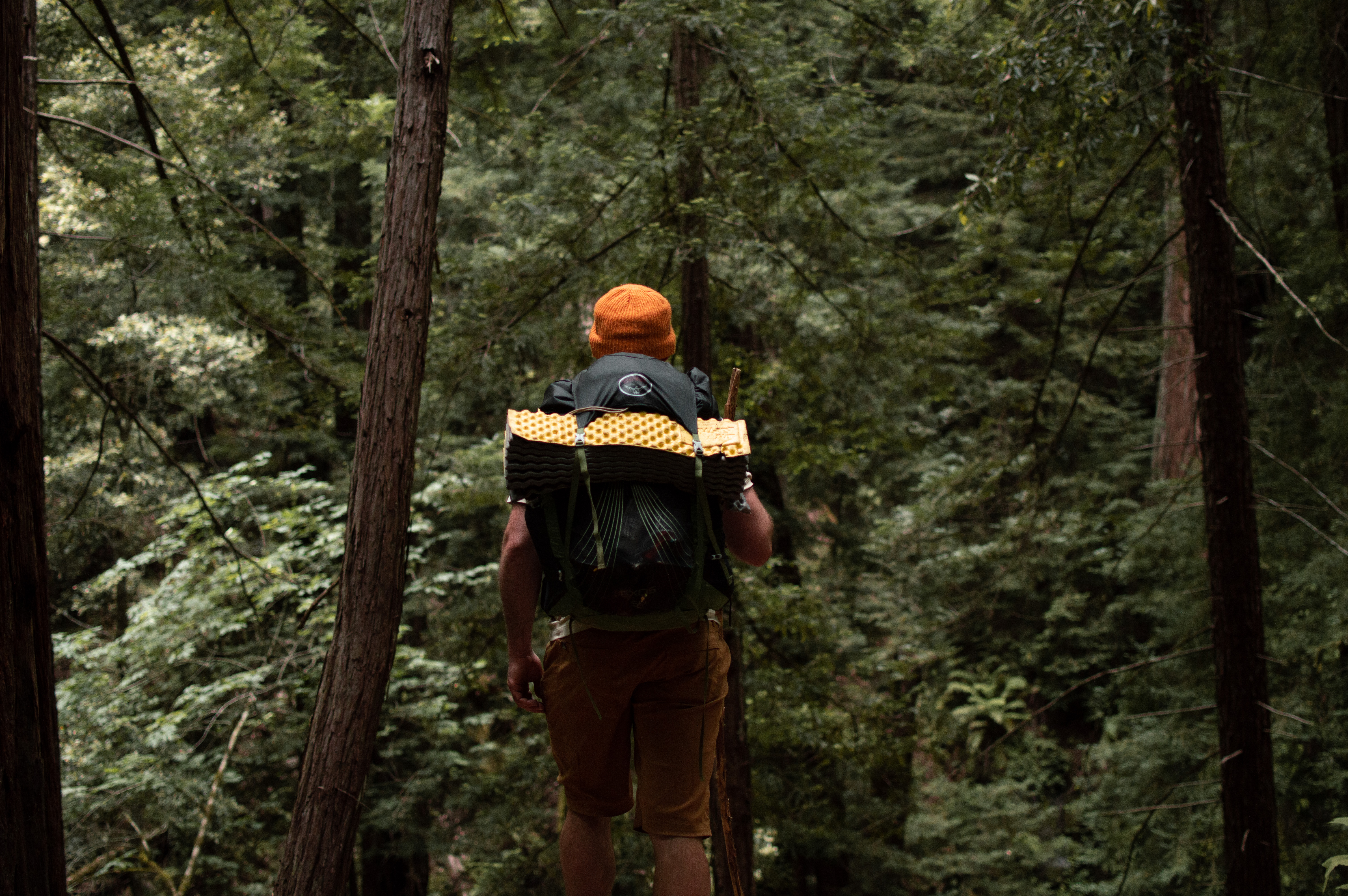
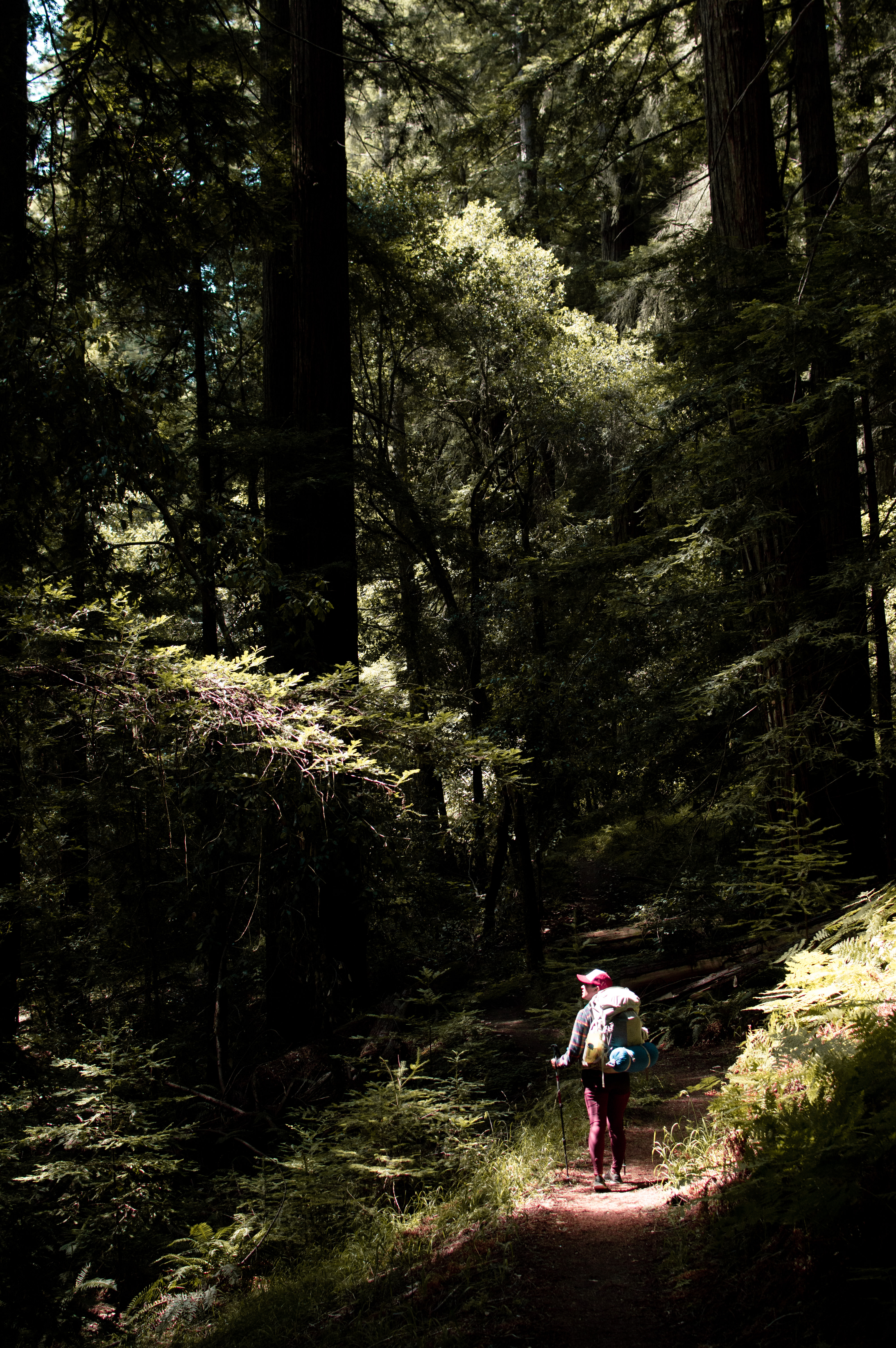
Length: 32 Miles (mileage differs depending on where you start and any detours, some stats say 25 miles while others say 34)
Time: Three days two nights
Difficulty: Easy to moderate, the trail is mostly downhill and shaded.
Type of trail: Point to point, so you will either need to have cars at both ends of the trail or figure out some kind of transportation between trail heads (there is no shuttle service).
Direction: East to west is the general direction since that is down hill, but if you are a glutton for punishment you can always go west to east and hike up hill for the whole hike.
Best time to go: May – November, keep in mind peak summer will be the most crowded and have the most mosquitoes.
Permit Stuff
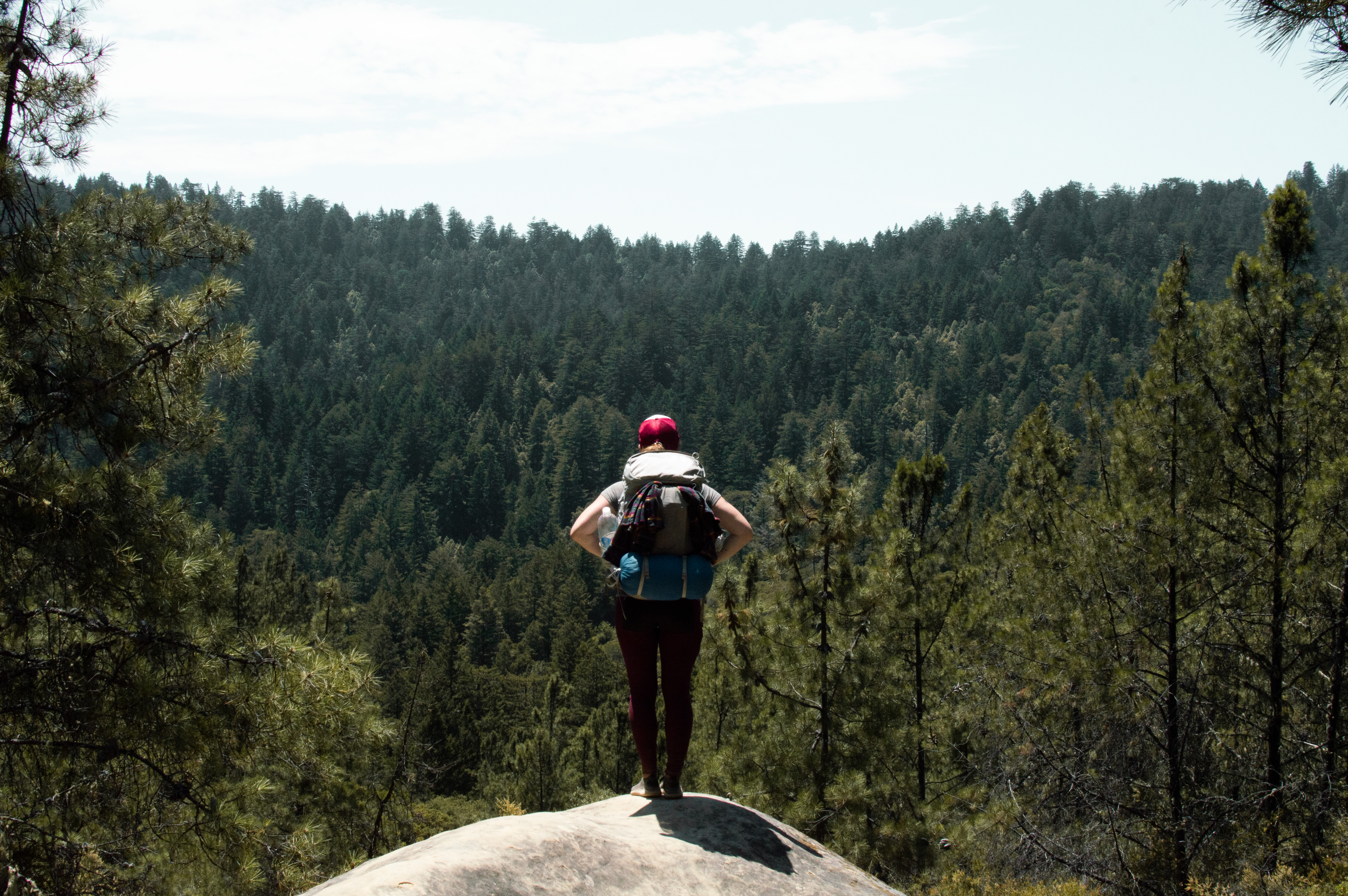
Looking for places to camp without a reservation? I got you covered!
It’s not your standard backcountry permit, you will need to reserve campsites at each of the trail camps and pay a reservation fee and that essentially acts as your permit.
Go to the CA Department of Parks & Recreation website, you’ll have to fill out a Backcountry Trail Camp Request form, but to do that you’ll have to open the Campsite Calendar to see what dates and campsites are available.
You must submit the form at least a week in advance, and just because you submitted the request doesn’t mean you’ll be approved.
When do get an approval email you have to call the phone number to confirm your reservation, pay the fees, and let them know how many parking permits you will need.
Campsite fees are $15 each and parking permits are $8 for Castle Rock trailhead and $10 for Waddell Beach trailhead. A total of $48 for two nights and parking cars at each end.
Parking permits need to be left in the cars and camping reservation info should be carried with you.
Campsites


You must camp in the campground you reserved, there is no dispersed camping.
Campfires are not allowed at any of the campgrounds due to high fire danger in the area.
All campgrounds have bear boxes to put your food and scented items.
Waterman Gap: Is the first campground available to camp at on the Skyline to Sea Trail, you’ll pass a couple of others, but you’d need a separate reservation for those campgrounds. Waterman Gap is nice as far as backcountry campgrounds go with running water and a pit toilet (what luxury!). Even though it feels like you are nestled into a redwood forest you are actually pretty close to the road so you can sometimes hear cars going by. But the redwoods are pretty and the campsites are nice so that’s a big plus.
Jay: Right smack dab in the middle of Big Basin State Park, Jay campground is right next to the visitor’s center and park headquarters so there are quite a few people around day hiking and car camping. While it definitely does not feel like the backcountry there is a general store to get beer and snacks, as well as flush toilets and even showers!
Sunset: If you wanted to extend your trip by a day you could make a side trip to the Sunset campground. It’s a bit of a detour off the regular Skyline to Sea Trail, but you’ll be rewarded with waterfalls so that’s a plus! It is a primitive campground so no running water or bathrooms, but there are plenty of shady trees and beautiful scenery.
Twin Redwoods & Alder: These two campgrounds are right next to each other near the end of the trail just about 2 miles from Waddell Beach. If you are planning to do a round trip hike you’d stay at one of these campgrounds, otherwise just head for the finish. They are semi-primitive sites so no running water but they do have pit toilets.
Need to know/requirements
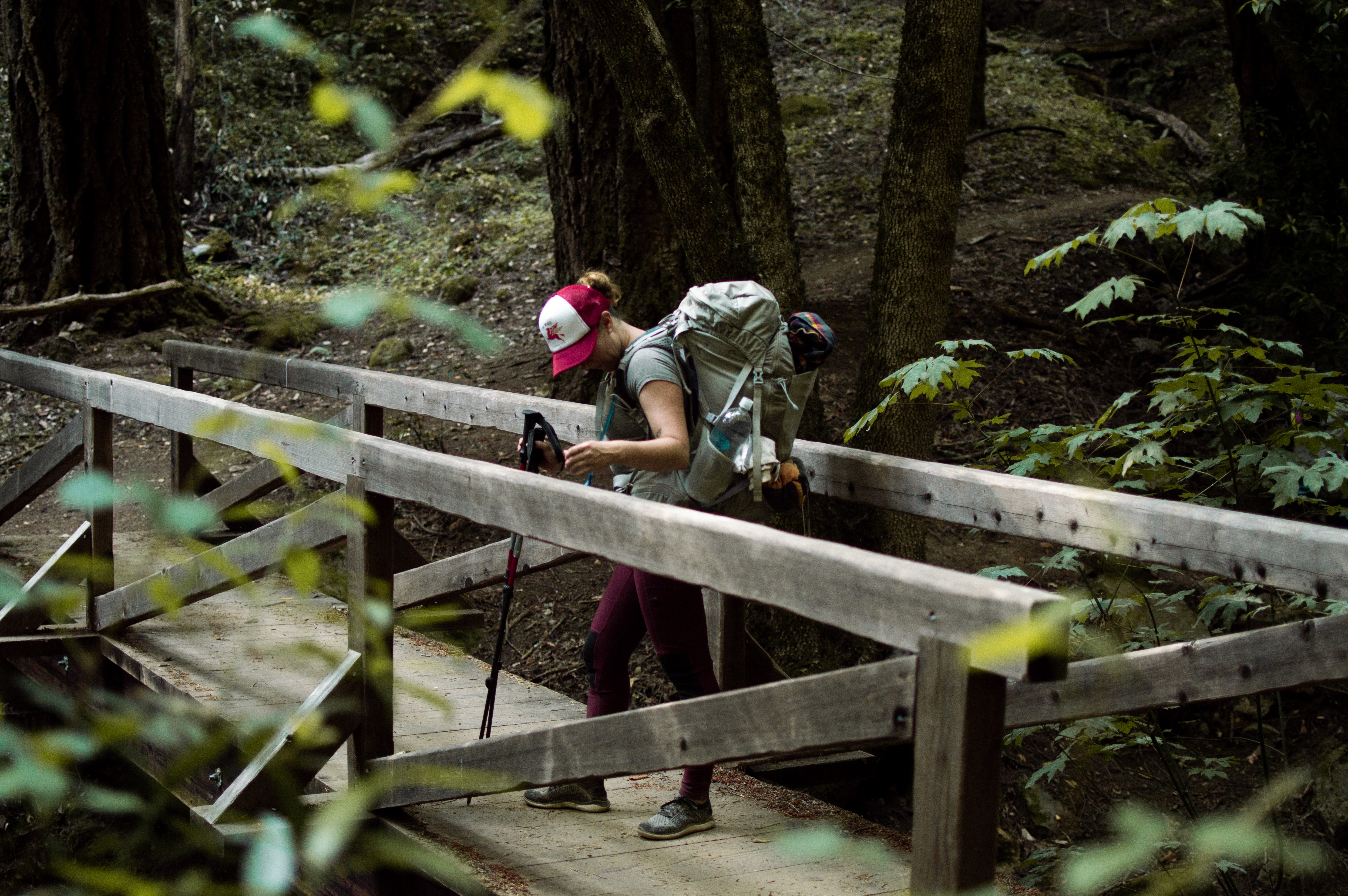

Remember Leave No Trace Principles
Dogs are not allowed.
Technically the start is at Saratoga Gap but there is no parking there so most people start a few miles up the road at Castle Rock trailhead.
There are a few trail closures and detours so pay attention to signage.
Bring a map, there are a lot of trails in the area, plus the detours a map will help to keep you on the right trail.
Always put all food in bear boxes.
We encountered a lot of mosquitos and poison oak on the trail, so be aware.
Cool things to see
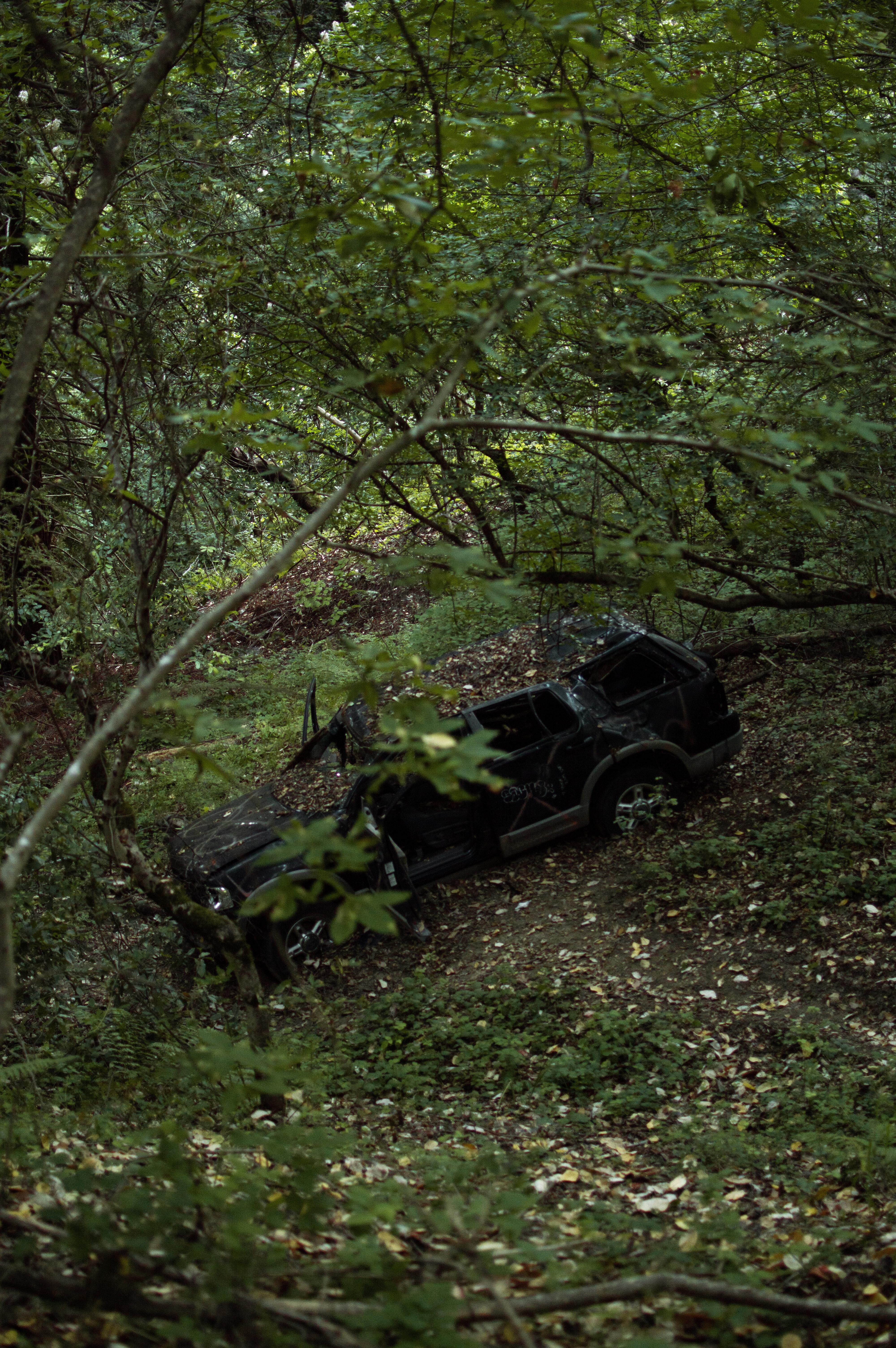


Cars in the forest, these cars must have fallen off the highway at some point and are now just in the trees.
Banana slugs! Bright yellow slugs are cool.
Opal Creek
Redwoods
Berry Creek Waterfall
Shuttling
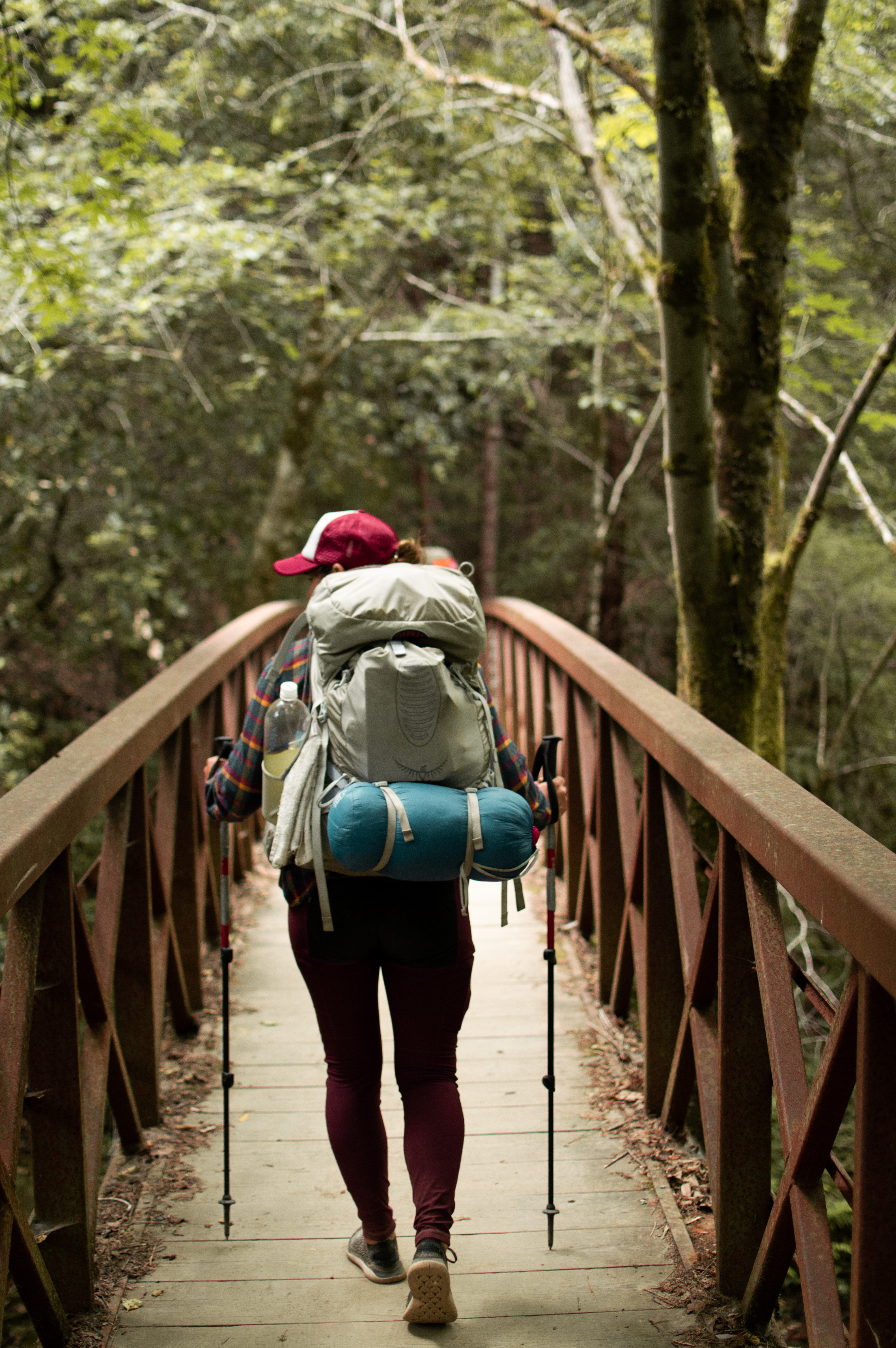
There is no shuttle system for this trail so you’ll have to figure out your own transportation.
Cars can be left at Castle Rock trailhead and Waddell Beach trailhead.
There is no overnight parking at Saratoga Gap Trailhead.
It’s about an hour drive between the two trailheads.
How I did it

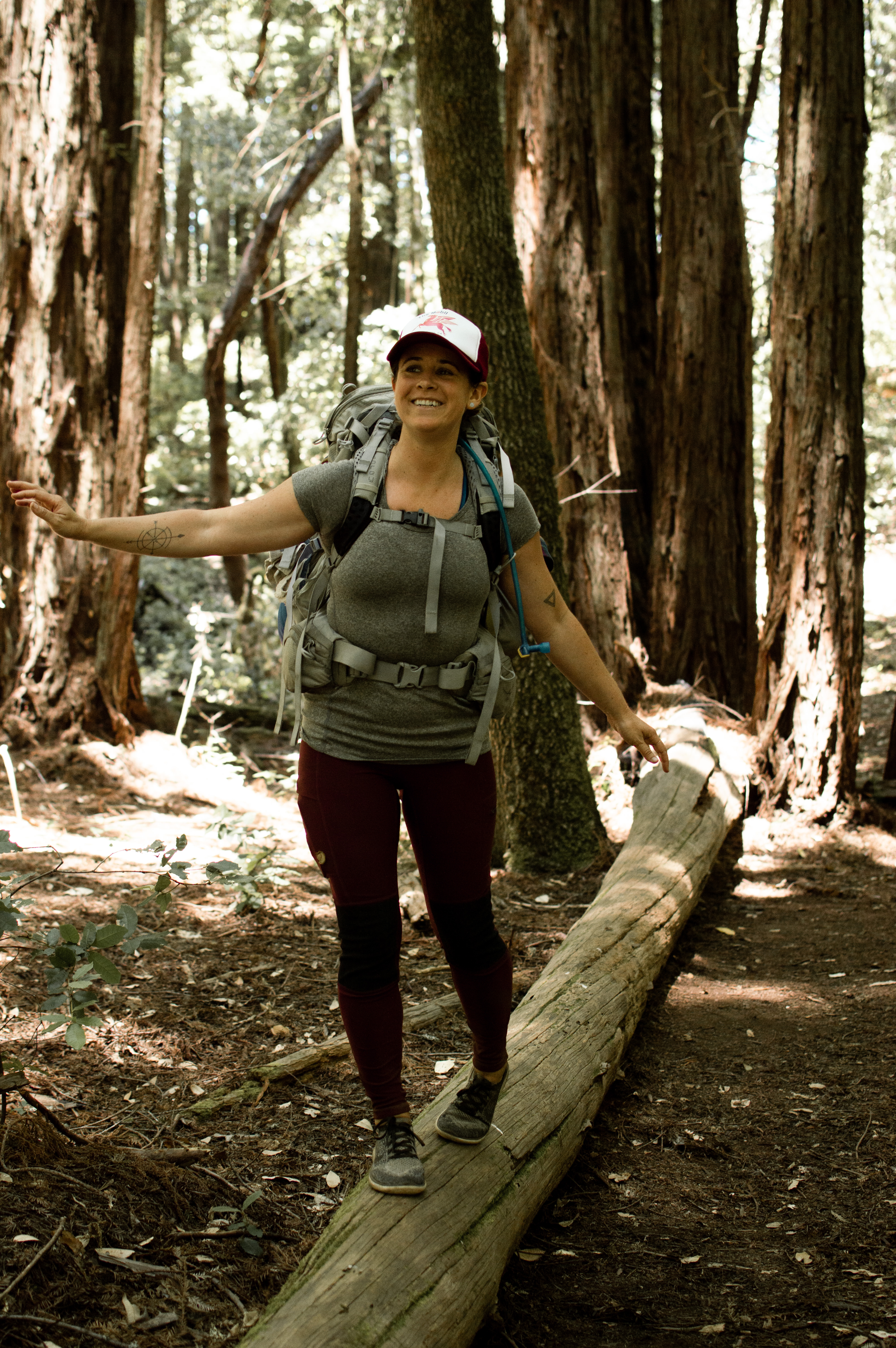
I went in mid July so there were a lot of people and a lot of mosquitos, but I still had a good time and enjoyed the hike in the redwoods.
Day One: We started from Castle Rock in mid
Day Two: The
Day Three: The last day was the longest day at 12 miles from Jay to Waddell Beach. The hike itself was beautiful, you go through the coastal redwood forest, it was incredibly lush and had an almost jungle-y feel to it. The trail goes along Opal Creek and you’ll get views of Berry Creek Waterfall. The last few miles of the hike are on a dirt road and go past farms so watch out for cars. You actually hit the parking lot before you get to the end of the trail at Waddell Beach so we didn’t end up going the last half mile or so to the beach since our car was right there.
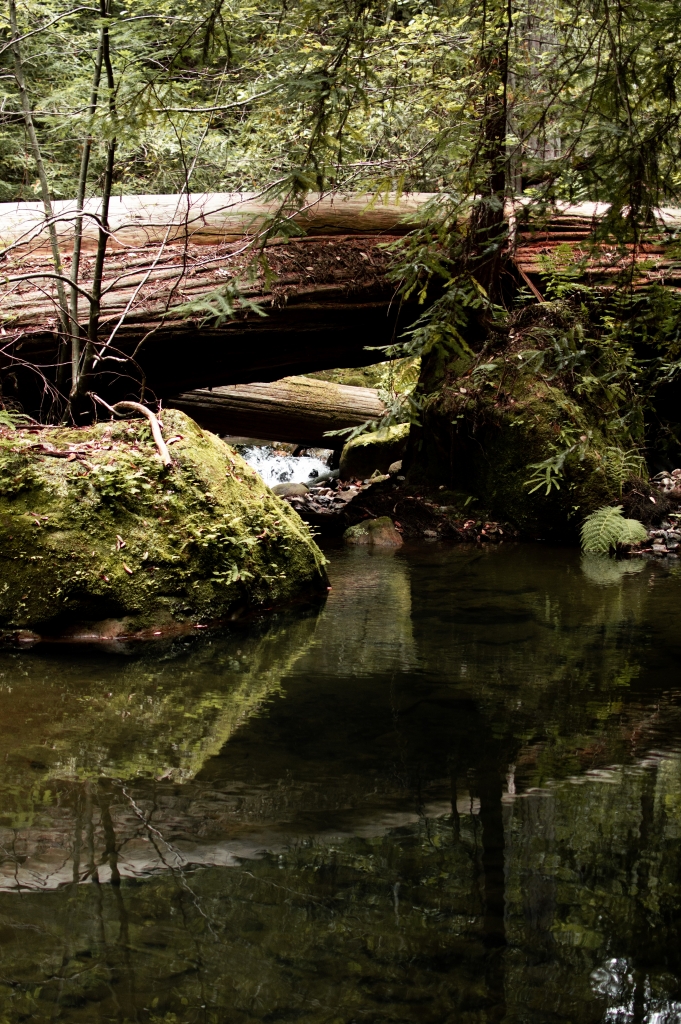

There were a few things that were so awesome to have while doing this trail.
- Bug Spray: There were a lot of mosquitos and this Sawyer Mosquito Repellent uses picaridin instead of deet, which I found to work just as well without the harsh chemicals.
- Solar Lantern: Since we couldn’t have campfires having a little lantern to provide some light when the sun went down was really nice. I love this one because it’s solar-powered (no batteries necessary!) and inflatable so it packs really small but then blows up.
- Hammock: Laying in a hammock at the end of a day of hiking feels so good. This one packs into itself and is light making it great for backpacking.
- Uno: Cards are such an easy and fun thing to bring backpacking. Once you’ve set up camp and you’re just hanging out playing a game of Uno is a fun way to pass the time. Plus Uno does not require a ton of brainpower so even if you’re tired you can play.
- Twinkle Lights: I like putting these string twinkle lights on our tent so that if I have to get up in the middle of the night I have a little bit of light to guide me back to the tent. Plus they just look cute add a little ambiance to the campsite. They are also solar-powered so they can charge up while you hike.
READ MORE:
Backpacking from Onion Valley to Mount Whitney
Backpacking 101: Clothes
Backpacking 101: Gear
Backpacking the Lost Coast Trail
Like this post? Pin it!






Pingback: Backpacking 101: Gear - Nattie on the Road
Pingback: Backpacking the Lost Coast Trail - Nattie on the Road
Pingback: Backpacking 101: Clothes - Nattie on the Road